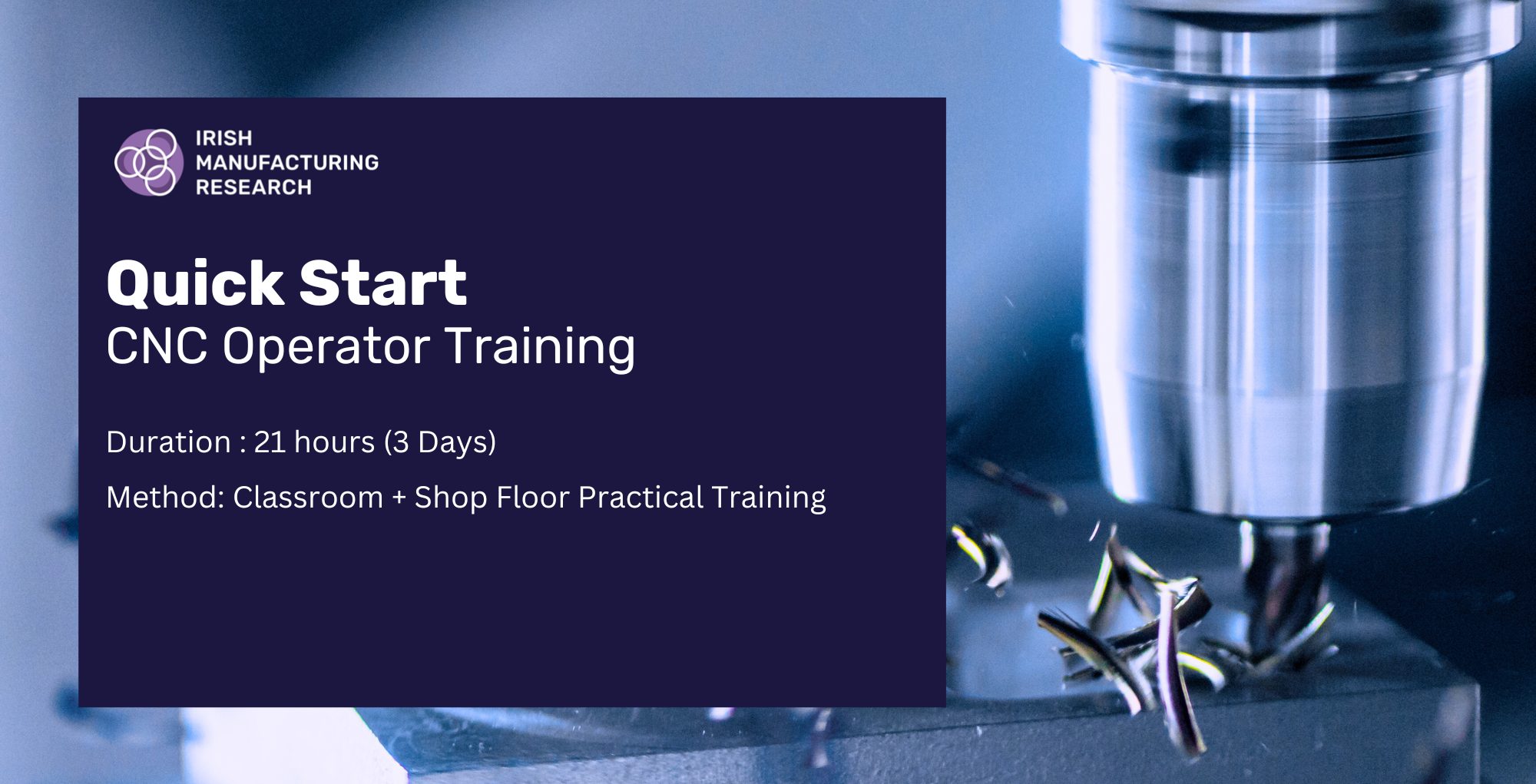
Quick Start CNC Operator
Course Description
This introductory course provides essential training for individuals entering CNC machining environments. It equips learners with the fundamental knowledge and practical skills needed to operate safely, read technical drawings, handle materials, inspect machined parts, and maintain clean and organised workspaces. The course also covers key concepts in machine types, basic maintenance (TPM), and coolant handling.
Through hands-on activities, demonstrations, and guided practice, learners will develop a strong foundation in CNC shop floor operations, health and safety, and quality control procedures.
Course Details
- Duration: 21 hours
- Delivery Method: Classroom + Shop Floor Practical Training
- Assessment: Practical observation, knowledge checks, and basic inspection task assessments
- Date: Register your interest to be notified of next course date
- Course outline: Available by request
Day 1 Training
- Health & Safety (certified)
- Manual Handling (certified)
- Coolant & Machine Maintenance
Day 2 Training
- Reading drawings
- Part Inspection
Day 3 Training
- Machine Types & Basic Operation
Target Audience
- New CNC Operators beginning their careers in precision machining or advanced manufacturing.
- Production Operators transitioning into CNC roles with little or no prior experience.
- Entry-Level Engineering or Maintenance Staff who require a foundational understanding of CNC machining environments.
- Students or Trainees in vocational/technical education programmes (e.g., mechanical engineering, manufacturing technology).
- Staff Requiring Refresher Training on basic shop safety, procedures, and CNC-related practices.
No prior CNC experience is required. This course provides a hands-on, practical introduction to the key skills, safety practices, and operational knowledge needed to work confidently and safely in a machining environment.
Learning Outcomes
- Identify and correctly use appropriate PPE for CNC machining tasks.
- Recognise common hazards in a machining environment and know how to respond.
- Demonstrate awareness of emergency procedures, including the use of emergency stops and fire extinguishers.
- Maintain a clean and safe work area.
Manual Handling
- Apply correct manual handling techniques to lift and move parts safely.
- Assess the weight and stability of loads before handling.
- Use mechanical aids or team lifting when necessary.
Coolant & Machine Maintenance
- Identify different types of coolants and understand their role in machining.
- Monitor coolant levels and condition; report or replace as needed.
- Perform basic TPM checks (e.g., clean filters, check hoses, oil levels).
- Understand operator responsibilities in maintaining machine performance.
Reading Drawings
- Interpret key elements of technical drawings, including views, dimensions, tolerances, and notes.
- Identify surface finishes and symbols relevant to CNC operations.
- Use drawings to verify part specifications before and after machining.
Part Inspection
- Use basic measurement tools (e.g., calipers, micrometers) to inspect machined parts.
- Accurately interpret dimensions and tolerances from engineering drawings.
- Record inspection results and identify parts that are out of specification.
- Follow proper procedures when non-conforming parts are found.
Machine Types
- Recognise the basic types of CNC machines: lathes, milling machines, vertical/horizontal machining centres.
- Identify machine axes (X, Y, Z, A, B, C) and basic movements.
- Understand the key differences between manual and CNC-controlled equipment.
- Safely operate or assist in operations under supervision.
